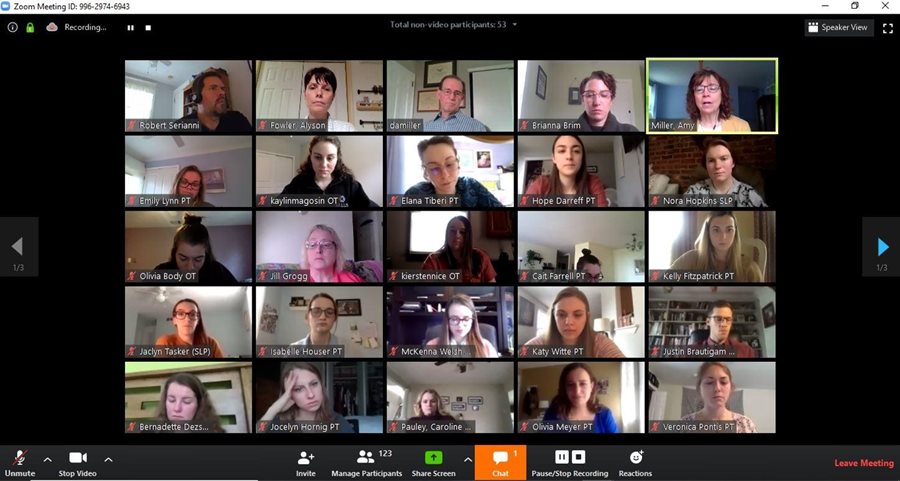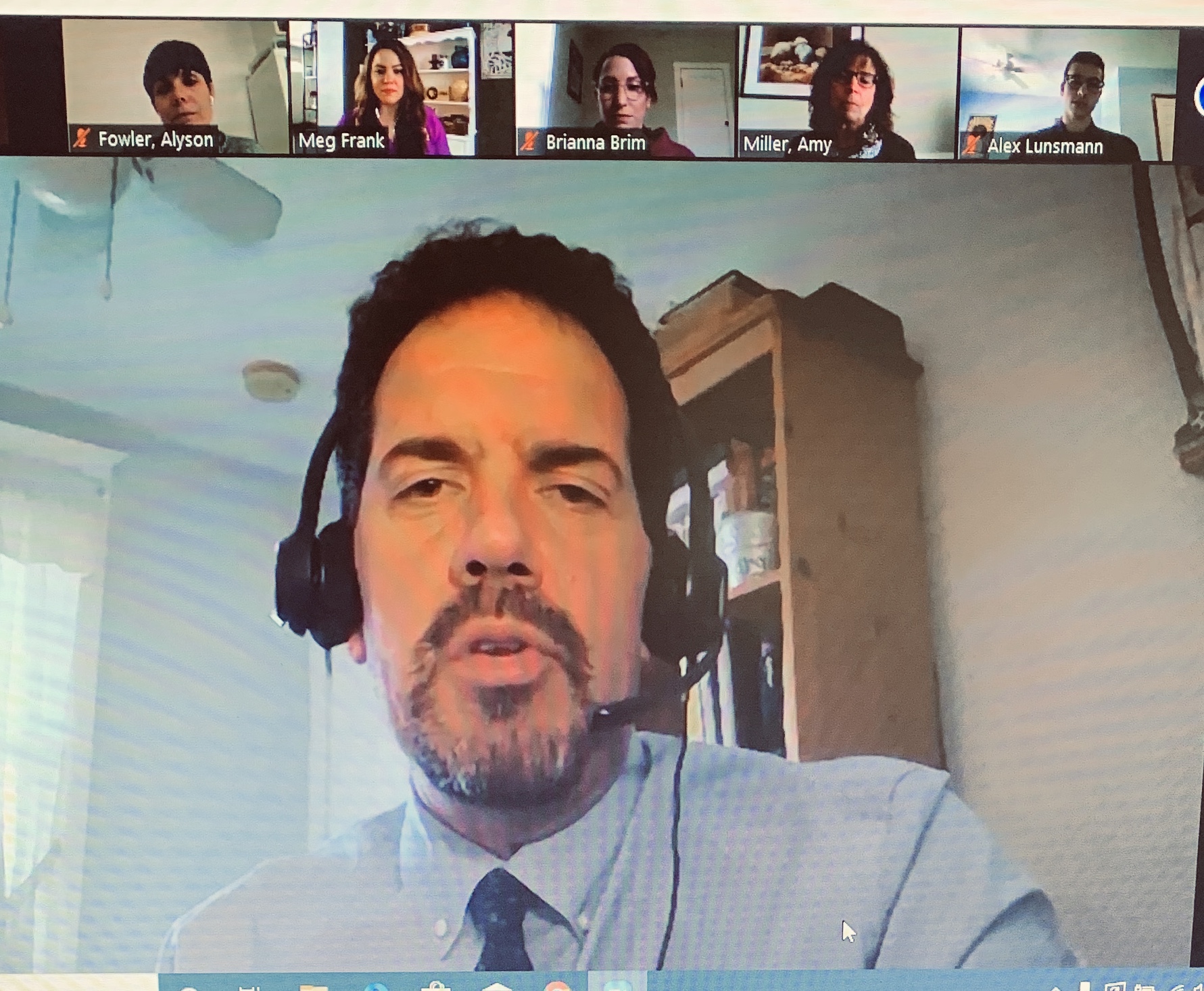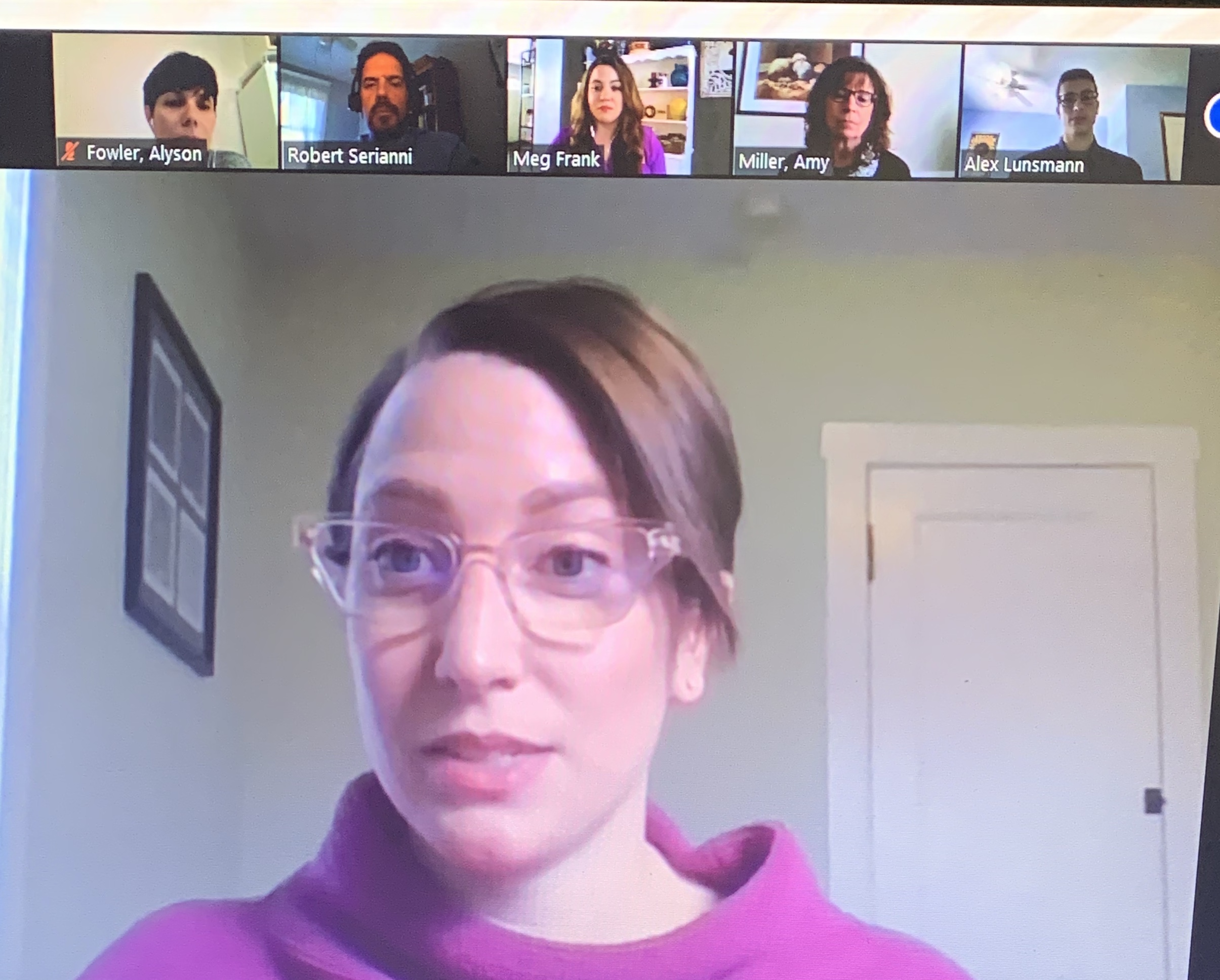
The recent COVID-19 pandemic has created an influx in telehealth services both locally and nationally. And, since Salus has a history of being at the forefront of health service delivery and technology, it’s no surprise the University’s Speech-Language Pathology (SLP) and Occupational Therapy (OT) programs are on the front lines – virtually.
Faculty from the two programs recently partnered with Arcadia University’s Physical Therapy (PT) program on deploying and reviewing telehealth best practices for students. Originally not an entry-level expectation of the professions, as Amy Miller, PT, DPT, EdD, associate professor of PT from Arcadia described, the shift to online learning as a result of the pandemic served as a seamless educational opportunity and an expectation of what future access to patients make look like.

Robert Serianni, MS, CCC-SLP, FNAP, department chair and director of Salus’ SLP program, was one of the faculty that spearheaded the initial session - originally intended to be covered over the course of one day on campus, with some projects before and after the meeting. But the teams quickly pivoted toward an online format from face-to-face when the campuses closed in the middle of March. “We really saw the value our students would have by continuing to meet together,” he said. And, in the span of that same afternoon, the team moved to working with a computer-based model. The joint seminar - held on April 17 – focused on how to trouble shoot the challenges of working one-on-one with a client through a computer based approach.
But, based on legislation, virtual therapy may just be a temporary change. “A lot of this is an emergency injunction to allow therapy to continue for folks who are currently enrolled in some type of therapy for both children and adults,” said Brianna Brim, MOT, OTR/L, CPAM, CLIPP, OT assistant professor at Salus, when discussing the long-term outcomes.
What the programs collectively have exposed their students to both didactically and clinically have radically changed. “This was our opportunity to say, this is what's happening now. These are ways that we can help push some of the [legislative] changes forward. “Brim said. “With the hope that the temporary emergency legislation in place, becomes permanent.”
Both universities have a hallmark focus on inter-professional education and practice. And, this conversation helps healthcare professionals become more familiar with topics, other professionals’ roles, and scope of practice. “It's a crux of our curricular themes, I believe in both universities. I think when we get those opportunities to have any type of interaction across professions, we jump at them,” Brim said. “I think the natural progression of inter-professional education for us is having an OT program, having an SLP program, being able to work with Arcadia to balance out the rehab trifecta is something that is really important to us already.”

All of the programs’ foundational skills are built in the classrooms, clinics and labs – students normally work with both live and simulated patients - simulated patients would be computer avatars or actors that come in to act out a disability or have some difficulty in which they are seeking services.
One downside: students chose these therapy professions because they appreciate the intimate relationships they build with their patients or students who have a disability. “Certainly the computer screen puts a distance between us and our patients,” Serianni said. “It's almost like a sidestep when we start talking about telepractice because as a therapist I might reach out if a client is having a hard time and give them a hand on the shoulder to redirect them or to show support. We have to now do that verbally and speech students tend to be pretty verbal. They've gotten into the program because they like to talk and now they're working with individuals that have trouble talking. Having them extend those skills to be less physical and more verbal in the classroom, in the lab and in the clinic setting is where we'll see them excel.”
Deanna Della Pia '21SLP agreed. “I thought our session was really great and it's really important moving forward as telehealth becomes such a big resource in healthcare that as students, we learn how to take care of our patients in the best way, both in-person and virtually,” she said.
Moving forward, programming like this will continue, but it may look a little different. “Hopefully, we'll actually be able to see each other face-to-face a little bit more, similarly to what we will see most practice settings, but it's definitely something that's really important to all of us and important that we are creating practitioners who recognize that as well,” Brim said.
In fact, Serianni confirmed this will be an ongoing interprofessional event with Arcadia every spring – tentative dates for next April have already been scheduled.